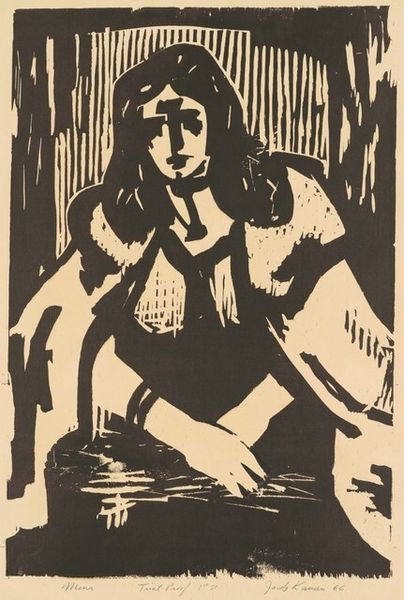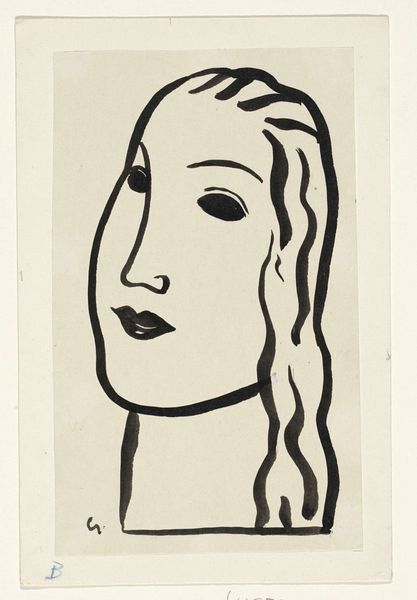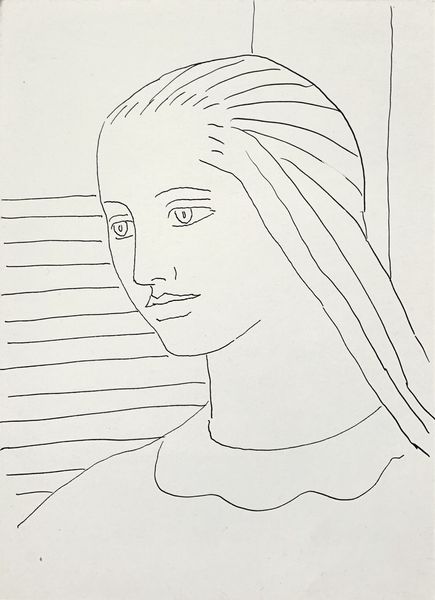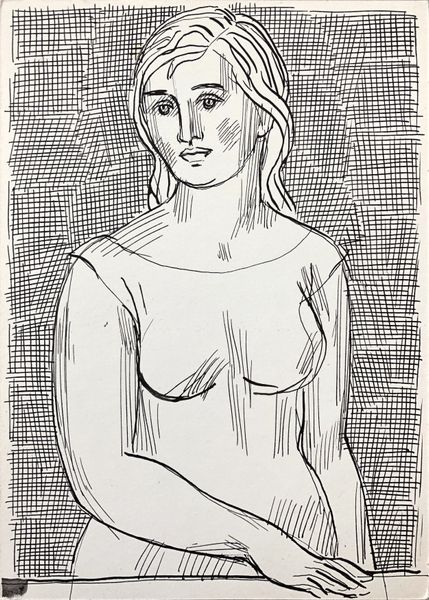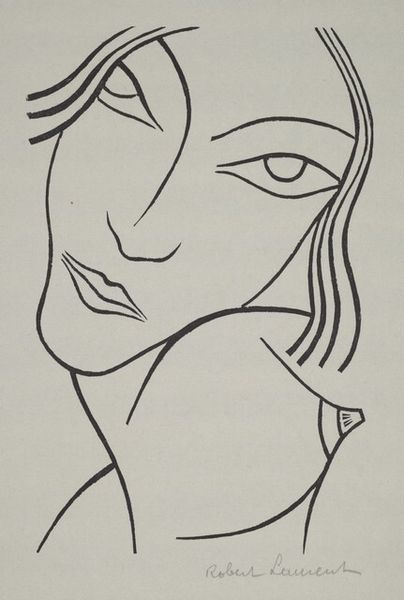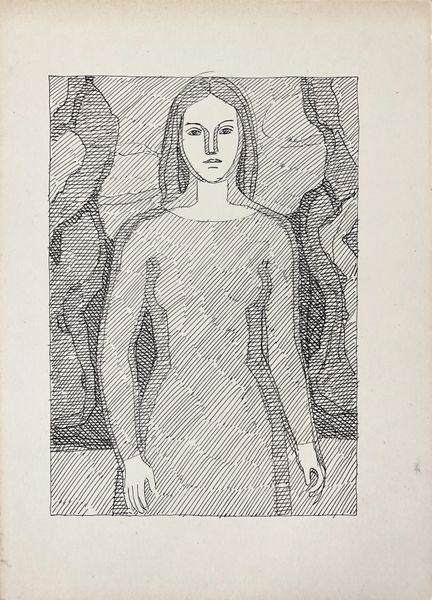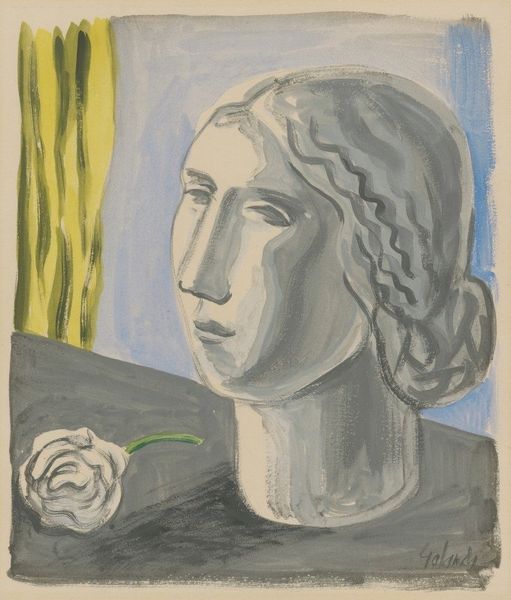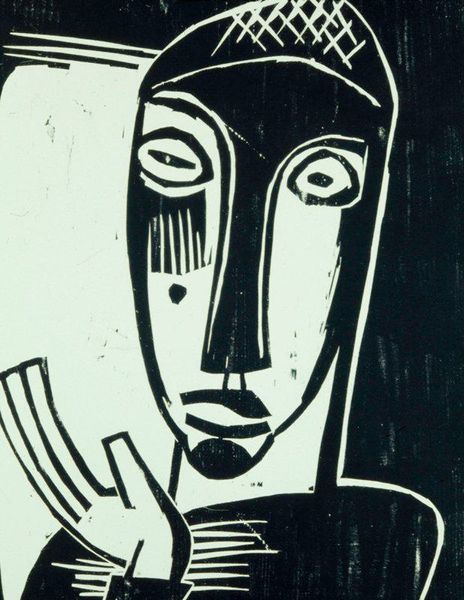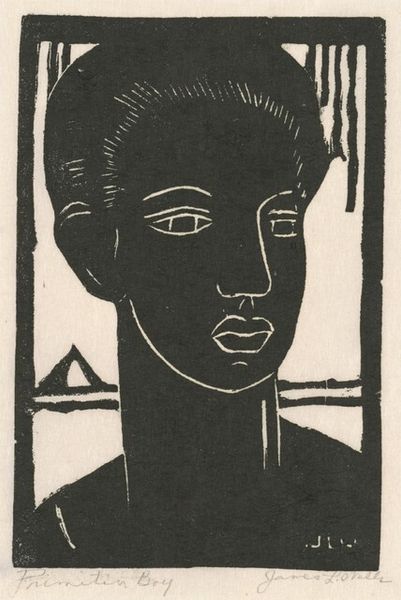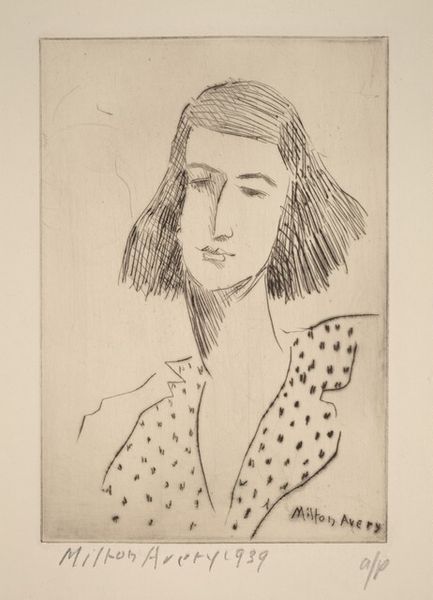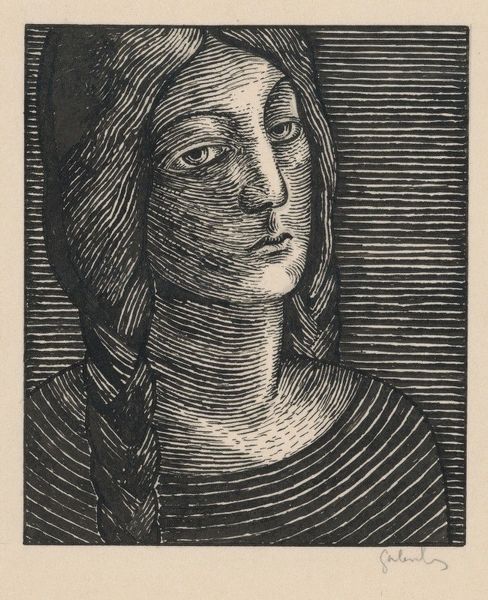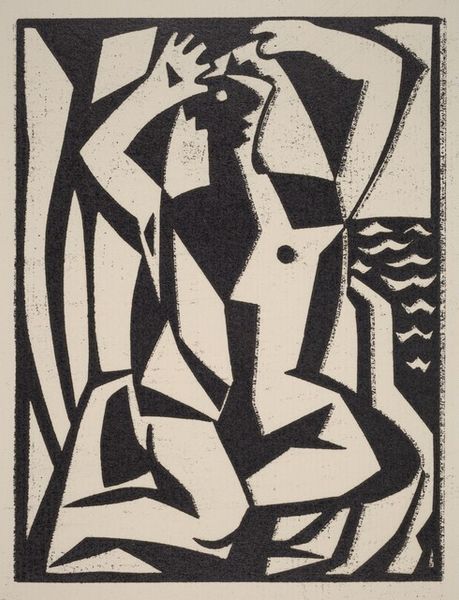
Copyright: Modern Artists: Artvee
Editor: So, we’re looking at Henri Matisse’s “TEENY” from 1938, a linocut print. It's striking how much personality he gets across with so few lines. I’m curious – what catches your eye about this piece, considering it's made through a very specific industrial printing process? Curator: What’s immediately interesting to me is how Matisse elevates a traditionally ‘lower’ form of reproduction, the linocut, into something akin to fine art. The material itself, linoleum, was widely used for flooring at the time. How does Matisse's use of a material commonly associated with domestic labor and mass production challenge the traditional boundaries between high art and craft? Editor: That's fascinating. So, by using linoleum, he's almost commenting on art's place within everyday life, blurring the lines between the functional and the aesthetic? It is also important to remind our listeners that prints could circulate a lot faster than painting, making Matisse´s art accesible to a bigger audience. Curator: Precisely. Consider the labor involved: the repetitive act of carving into the linoleum. Does it connect to the kind of industrialized labor that defined much of the 20th century? Furthermore, the consumption of such prints: were they luxury items, or meant for wider circulation? How did the mass reproduction affect the perceived value of this particular work, versus a unique painting of a model? Editor: I see what you mean! So, beyond just the image itself, the real meaning lies in the dialogue between the art, its production, and the society it was created in. Thank you, that helps a lot! Curator: My pleasure! Considering materiality and its context truly enriches our understanding and appreciation of even the simplest-looking pieces.
Comments
No comments
Be the first to comment and join the conversation on the ultimate creative platform.
